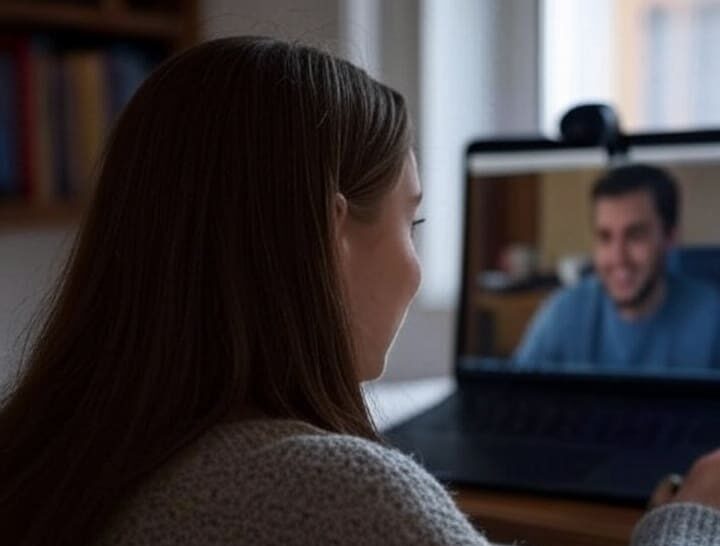How webcams quietly revolutionized real human connection

How webcams quietly revolutionized real human connection
In an era where much of our communication feels fleeting – reduced to emojis, quick texts, and scrolling feeds – webcams have quietly reshaped what it means to truly connect. They’ve moved far beyond their original use in business meetings and family check-ins, transforming into virtual doorways where real human relationships are built, one conversation at a time.
Table of contents
When webcams first became mainstream in the early 2000s, they were practical but uninspired – primarily tools for conference calls or hurried holiday greetings. But as technology evolved, so did the ways people used these tiny cameras. Today, webcams power global communities, where language learners, hobbyists, teachers, and students come together not just to exchange information, but to share lives.
Consider the beauty of virtual language exchanges. Platforms like Tandem, Sugarcams, and Italki pair strangers across oceans for spontaneous conversations. Imagine a retiree in Paris dusting off her Japanese with the help of a Tokyo university student, while in return, she shares her native French. What starts as mutual learning often blossoms into unexpected friendship – a reminder that curiosity bridges gaps where borders once stood.
Women and men also find partners online, and webcams are a welcome tool to introduce themselves to one another.
Shrinking the World, One Click at a Time
Long before webcams, connecting with someone across the world required expensive flights, time zone gymnastics, or costly long-distance phone bills. Today, you click “join meeting,” and suddenly you’re in someone’s living room in Buenos Aires learning to cook empanadas, or chatting with a hiker in British Columbia about the best mountain trails.
It’s not just about learning or working – it’s about creating shared experiences. Virtual book clubs debate their latest reads, online cooking classes whip up dishes from countless cultures, and digital game nights build laughter across continents. During the global pandemic, when the world felt closed and isolated, webcams became crucial lifelines – proof that we could still share smiles, stories, and comfort despite physical distance.
Safe Spaces, Real Faces
But webcams do more than connect strangers – they create sanctuaries. For marginalized groups – whether navigating mental health challenges, chronic illness, or parenting struggles – seeing another compassionate face on a screen can be a lifeline. Text-based forums help, but there’s something powerful about seeing empathy in real-time, face-to-face.
Spaces like Meetup’s video groups, Discord’s lounge rooms, and specialized forums foster safe, inclusive environments where people share openly, without fear of judgment. Careful moderation and thoughtful community rules help keep these spaces kind and welcoming.
Passion-Powered Video Communities
Today, webcams are fueling not only socializing but collaboration around shared passions:
- Bookclubz lets readers dive into rich, face-to-face literary debates from across the globe.
- JamKazam enables musicians to jam in real-time, syncing instruments and voices despite the miles between them.
- Chess.com pairs players in live matches where webcams add a personal touch – strategy meeting personality.
Unlike algorithm-driven social media feeds, these interactions are genuine, sparked by interest and sustained by human curiosity.
Evolving Webcam Etiquette
Naturally, this shift brings new norms. Basic digital courtesies – like muting when others speak, respecting time zones, or using blurred backgrounds to protect personal privacy – have become second nature. Most platforms let users control when their camera is on, giving people the freedom to manage how they show up.
What’s Next?
The future of webcams looks promising. Innovations like real-time translation, auto-framing, and augmented reality enhancements will make virtual interactions smoother and richer. Yet, the heart of webcam communication will likely stay unchanged: there’s simply no substitute for seeing someone’s face when they smile, laugh, or listen.
Webcams Are A Window to the Human Spirit
Webcams aren’t just hardware – they’re human bridges. Every time we switch one on, we invite shared stories, cultural exchange, and moments of real empathy. Whether you’re diving into a virtual hobby group, helping someone learn a new language, or simply offering a listening ear, the lens captures what much of the digital world misses: authenticity.
In the end, what webcams offer is simple but powerful – the chance to be seen, and to see others, in a world that often feels disconnected.
Chief editor of Side-Line – which basically means I spend my days wading through a relentless flood of press releases from labels, artists, DJs, and zealous correspondents. My job? Strip out the promo nonsense, verify what’s actually real, and decide which stories make the cut and which get tossed into the digital void. Outside the news filter bubble, I’m all in for quality sushi and helping raise funds for Ukraine’s ongoing fight against the modern-day axis of evil.
Since you’re here …
… we have a small favour to ask. More people are reading Side-Line Magazine than ever but advertising revenues across the media are falling fast. Unlike many news organisations, we haven’t put up a paywall – we want to keep our journalism as open as we can - and we refuse to add annoying advertising. So you can see why we need to ask for your help.
Side-Line’s independent journalism takes a lot of time, money and hard work to produce. But we do it because we want to push the artists we like and who are equally fighting to survive.
If everyone who reads our reporting, who likes it, helps fund it, our future would be much more secure. For as little as 5 US$, you can support Side-Line Magazine – and it only takes a minute. Thank you.
The donations are safely powered by Paypal.





